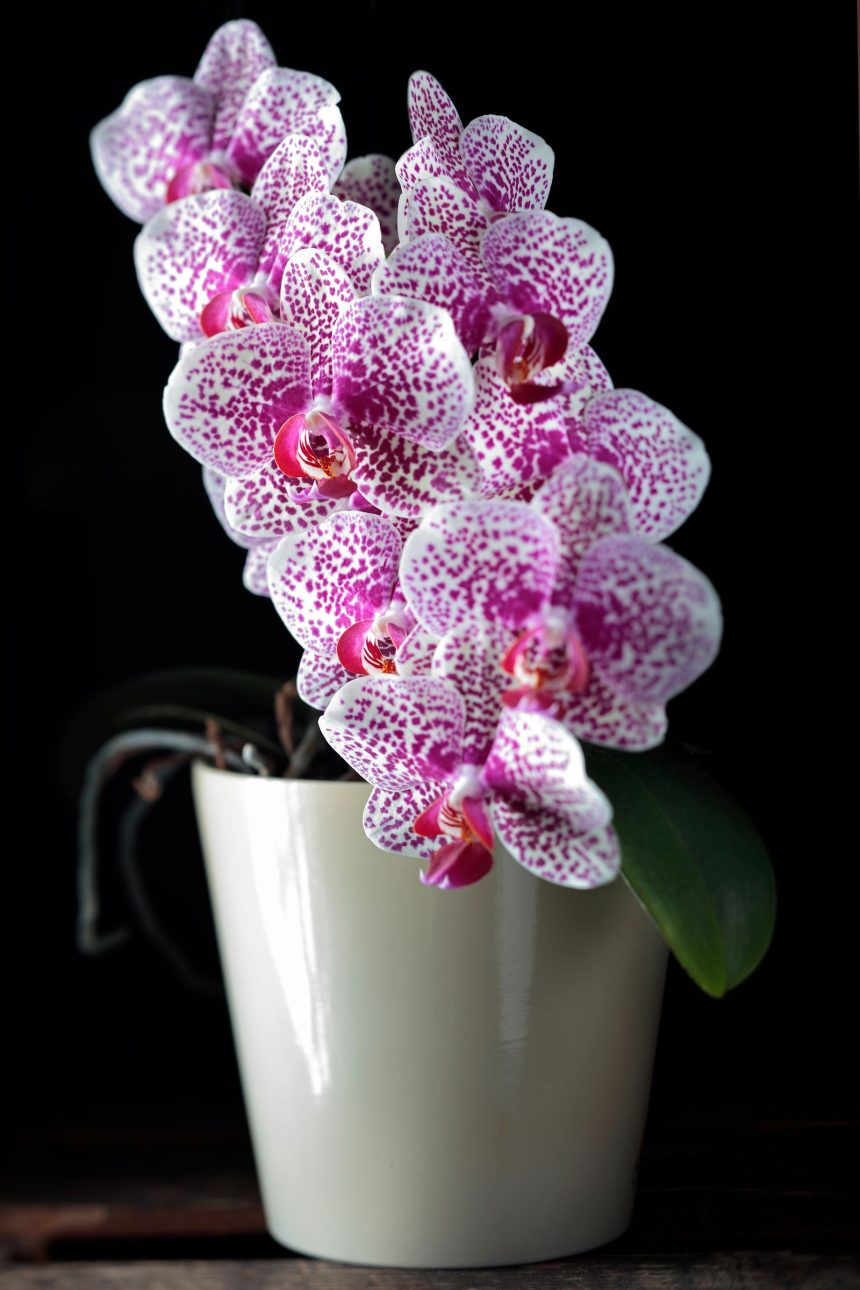Oncidium – Encompassing 336 species, the dancing-lady orchids have a variety of needs: some prefer warmth, others cooler conditions. The South American dove orchid, O. ornithorhynchum, which has sherbet-scented purple-pink flowers, enjoys a bright windowsill in winter and light shade in summer, with a temperature range of 13 to 24°C.
Cambria orchids – This group comprises hybrids produced from various genera, including Oncidium. They mostly have showy, colourful flowers and enjoy bright, filtered light at around 13 to 24°C.
How do you take care of indoor orchids?
Watering
Rainwater at room temperature is one of the secrets of the successful orchid grower, so if you’re growing several orchids, it’s worth installing a rainwater butt in the garden and then sitting your watering can of rainwater indoors for a few hours until it reaches the right temperature. Water when the compost is only slightly moist, but never leave it until the compost is completely dry. Lifting the pot to see how heavy it is will help to ascertain whether the plant needs a drink.
Watering in the morning is best, especially in hot, sunny weather, when watering may be required weekly. Sit the plant in the sink; pour the rainwater generously into the pot and let it drain away, before sitting the plant back on its tray. Roots growing outside the pot can be misted with a water spritzer until they turn green. If the leaves are dusty, give them a wipe with a damp cloth to boost photosynthesis. When returning your orchid to its windowsill, ensure any developing flower spikes are facing in the same direction they were when you moved the plant!
Most orchids enjoy high humidity, and therefore suit bathrooms or kitchens; otherwise, they should be placed on a tray of gravel or pebbles and water to boost the moisture of the air around them.
Feeding
In general, orchids don’t like too much food. In the growing season, give them a high-nitrogen feed at a quarter of the strength recommended on the packet, and a high-potash feed at the end of the growing season, also at less than the recommended strength. Alternatively, use specialist orchid fertiliser at the advised strength.
Tiger orchid flowers (Oncidium sp).DEA / GIANNI OLIVA
How long do indoor orchids last?
The moth orchid (Phalaenopsis) can bloom for 3 to 5 months and live for 10 to 15 years, in favourable conditions. To persuade it to reflower, cut off the spent flower stem 2 to 3 nodes up from the base.
For longevity, it’s important to re-pot regularly: at least every two years; ideally, once a year in spring. A clear pot allows you to detect the health of the orchid and its moisture levels, as well as allowing the roots to photosynthesise, but isn’t necessary – the size of the pot is more important, with a small container preferable; indeed, the old container may be suitable, if in good condition. Remove any unhealthy or dead leaves and unhealthy or dead roots, and prune healthy, plump roots to around 12 centimetres. Gently get rid of as much of the old compost as you can and replace it with fresh orchid compost or orchid bark; you can also mix in some sphagnum moss, which aids moisture retention.







